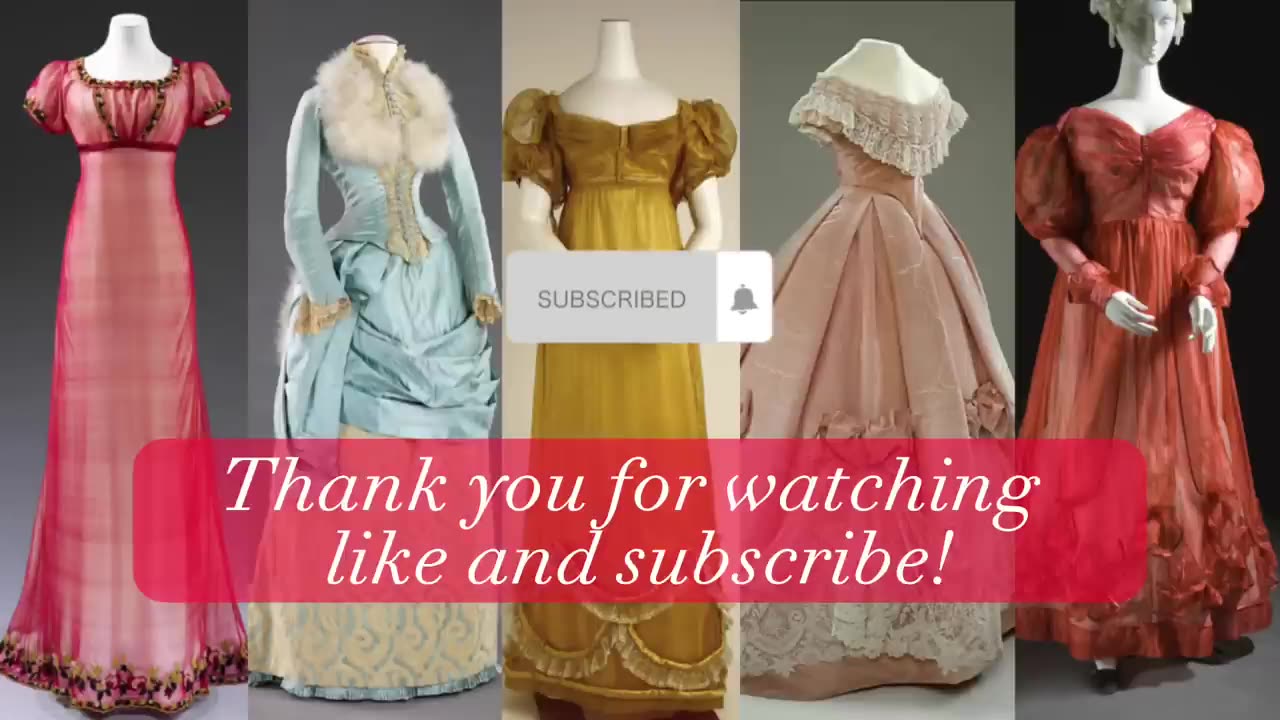Premium Only Content

100 Dresses: One For Every Year in the 1800s | Cultured Elegance
100 Dresses: One For Every Year in the 1800s | Cultured Elegance
Take a journey through the 19th century with 100 Dresses: One for Every Year in the 1800s. From the elegance of the Regency era to the grandeur of Victorian fashion, and from the flowing lines of the Empire silhouette to the elaborate gowns of the late 1800s, this Cultured Elegance episode explores a century of style evolution.
See how 1800s fashion reflected shifting ideals, innovations, and society itself—from the refined simplicity of early Bridgerton-inspired Regency gowns to the opulent crinolines, bustles, and layered designs of the Victorian age. Each year tells its own story of changing shapes, fabrics, and influences, capturing the artistry and drama of fashion history.
Highlights by Decade:
1800–1810: High-waisted Empire gowns, flowing muslin inspired by neoclassicism.
1810–1820: Regency styles with puffed sleeves and delicate embroidery.
1820–1830: Fuller skirts, rising waistlines, and romantic detailing.
1830–1840: Gigot or leg-of-mutton sleeves, dramatic wide shoulders.
1840–1850: Narrow waists, elongated bodices, dark silks, and modest styles.
1850–1860: Expansive crinoline skirts supported by steel cages.
1860–1870: Civil War-era gowns, tiered skirts, and wide silhouettes.
1870–1880: Introduction of the bustle, back-heavy skirts with draping.
1880–1890: Sculptural tailoring, natural form dresses, fitted bodices.
1890–1900: Exaggerated leg-of-mutton sleeves, hourglass silhouettes, and the transition into the Edwardian age.
Cultured Elegance celebrates history, fashion, and design through captivating stories of the people and places that shaped culture. If you love exploring history through fashion and society, be sure to like, subscribe, and share.
Copyright Disclaimer under Section 107 of the Copyright Act 1976, allowance is made for "fair use" for purposes such as criticism, comment, news reporting, teaching, scholarship, and research. Educational use tips the balance in favor of fair use.
-
 LIVE
LIVE
Nerdrotic
4 hours ago $13.33 earnedStar Wars is DEAD! | Is Hollywood Killing Pop Culture | WB for sale - Friday Night Tights 377
1,778 watching -
 LIVE
LIVE
Side Scrollers Podcast
1 day ago🔴SIDE SCROLLERS SUB-A-THON🔴FINAL DAY!🔴Craig Makeover + US Dart Throw + More!
1,005 watching -
 LIVE
LIVE
Tundra Tactical
3 hours agoProfessional Gun Nerd Plays Battlefield 6
47 watching -
 LIVE
LIVE
SavageJayGatsby
2 hours agoFriend Friday – Goose Goose Duck Chaos! 🦆💥
22 watching -
 58:55
58:55
Roseanne Barr
5 hours agoJOSH HAMMER | The Roseanne Barr Podcast #120
154K148 -
 1:23:12
1:23:12
Kim Iversen
3 hours agoRFK, JFK, Trump, Charlie Kirk — Deep State Assassinations? | Sean Stone
12.6K34 -
 LIVE
LIVE
EricJohnPizzaArtist
3 days agoAwesome Sauce PIZZA ART LIVE Ep #66: Blabs from Side Scrollers!
83 watching -
 LIVE
LIVE
Nikko Ortiz
34 minutes agoNew Army Machine Gun In Insurgency Sandstorm... |Rumble Live
69 watching -
 27:54
27:54
Michael Franzese
3 hours agoDeep Dive Into The Epstein Crime Scene Mystery
23.1K10 -
 1:08:45
1:08:45
DeVory Darkins
6 hours agoLetitia James drops frantic speech after pleading not guilty as Canada gets NIGHTMARE NEWS
52.8K34